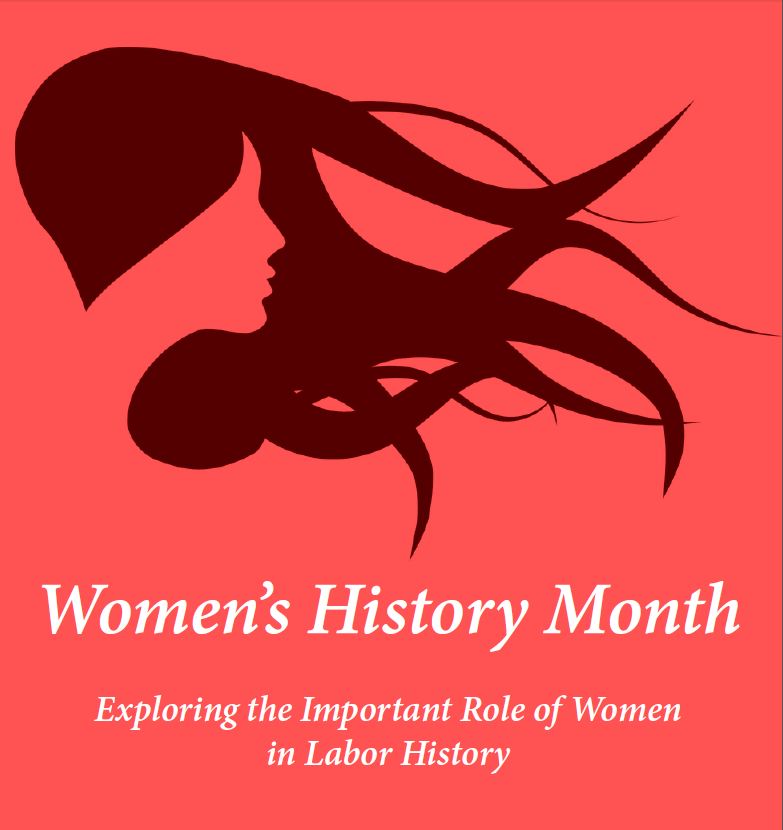
The history of America’s working women is a history of advocating for the abolition of slavery, the right to vote, the right to unionize, the welfare of children, and the extension of human rights to all. Women were among the first workers to bear the hardships of the industrial revolution, and among the first to unionize.
Women have participated in the labor movement in both a lead and supportive role through its entire history, but the movement has not always been friendly in return.
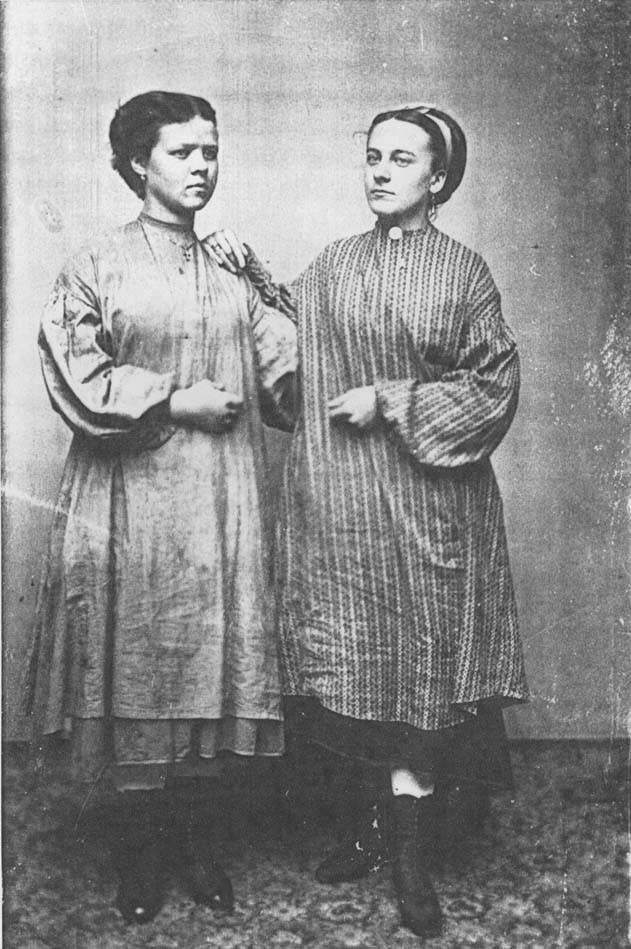
Tintype of two young women in Lowell, Massachusetts, circa 1870. (Public Domain.
Source: Center for Lowell History,
University of Massachusetts Lowell Libraries)
When young women were hired to tend the power looms of New England’s early factories, they became some of the earliest workers exposed to the rigors of the industrial workplace. As early as the 1830s, women who worked in the textile mills of Lowell, Massachusetts, took action to protest their arduous working conditions and low wages.
The “Mill Girls,” daughters of propertied New England farmers between the ages of 15 and 30, started their days at 5 a.m. and finished at 7 p.m., putting in regular 14-hour shifts. The noise and heat were often intolerable. Pay cuts in 1834 prompted the girls to walk out, a strike that gained national attention. The Lowell women’s organizing efforts were notable not only for the “unfeminine” participation of women, but also for the political framework used to appeal to the public. Framing their struggle for shorter work days and better pay as a matter of rights and personal dignity, they sought to place themselves in the larger context of the American Revolution. In 1846, the workers formed the Lowell Female Labor Reform Association in order to press for a 10-hour day.
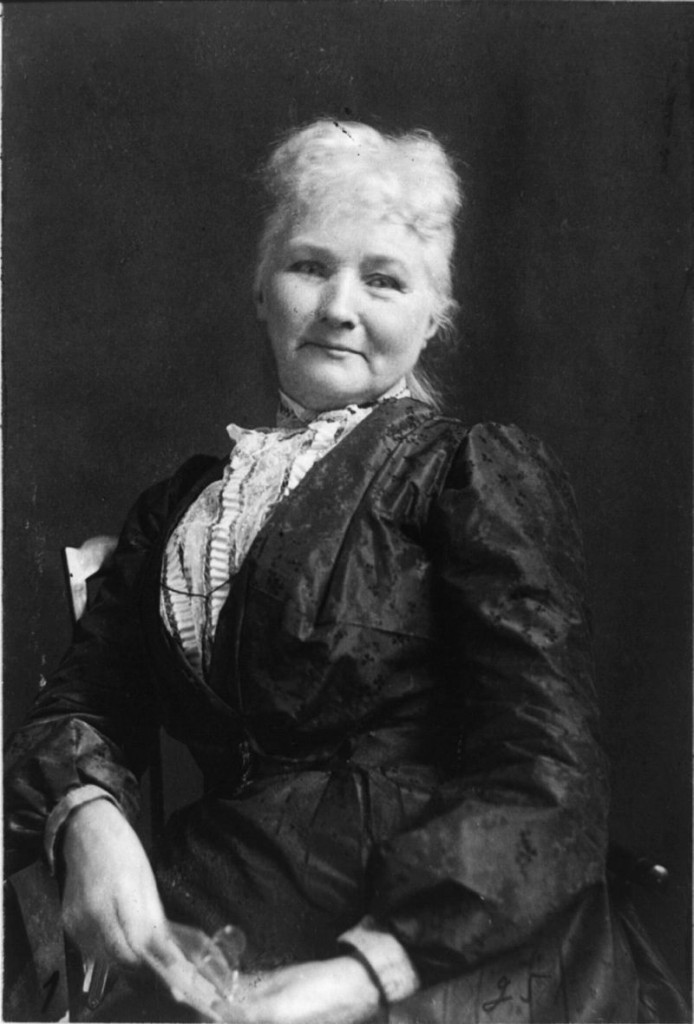
Mary Harris “Mother” Jones was a nineteenth-century Chicago seamstress who converted her resentment of the uneven distribution of wealth in society into a lifetime of activism on behalf of labor unions. “I’m not a humanitarian,” she declared, “I’m a hell-raiser.” (Photo by Bertha Howell. Source: United States Library of Congress)
After the Civil War, which saw the deaths of more than 600,000 men and the maiming of countless others, it became necessary for women to enter the work force in increasing numbers. Some journalists and labor leaders called for the creation of a Women’s Bureau to oversee conditions of female labor. But that agency, later formed as part of the federal Department of Labor, did not actually materialize until 1920. In the meantime, even African-American women in the South had begun to unionize. Newly freed black women, working as laundresses in Jackson, Mississippi, formed a union and struck for higher wages as early as 1866. Married or single, these women participated in the paid labor force to a far greater extent than other American women, largely because racial discrimination limited economic opportunities for black men.
The Knights of Labor, established in 1869, was the first large-scale national labor federation in the United States. In 1881, its members voted to admit women. The organization grew significantly in the mid-1880s after a series of successful strikes. Stressing equal pay regardless of sex or color, the Knights relied heavily on the organizing efforts of women such as the beloved widow, Mary Harris Jones, better known as “Mother Jones.” By the 1890s, the Knights of Labor, weakened by lost strikes, poor investments, and battles with the newly formed American Federation of Labor (AFL), no longer carried much weight in the labor movement. Its early demise, however, could not detract from the unprecedented role played by the Knights of Labor in the promotion of women in the work force.
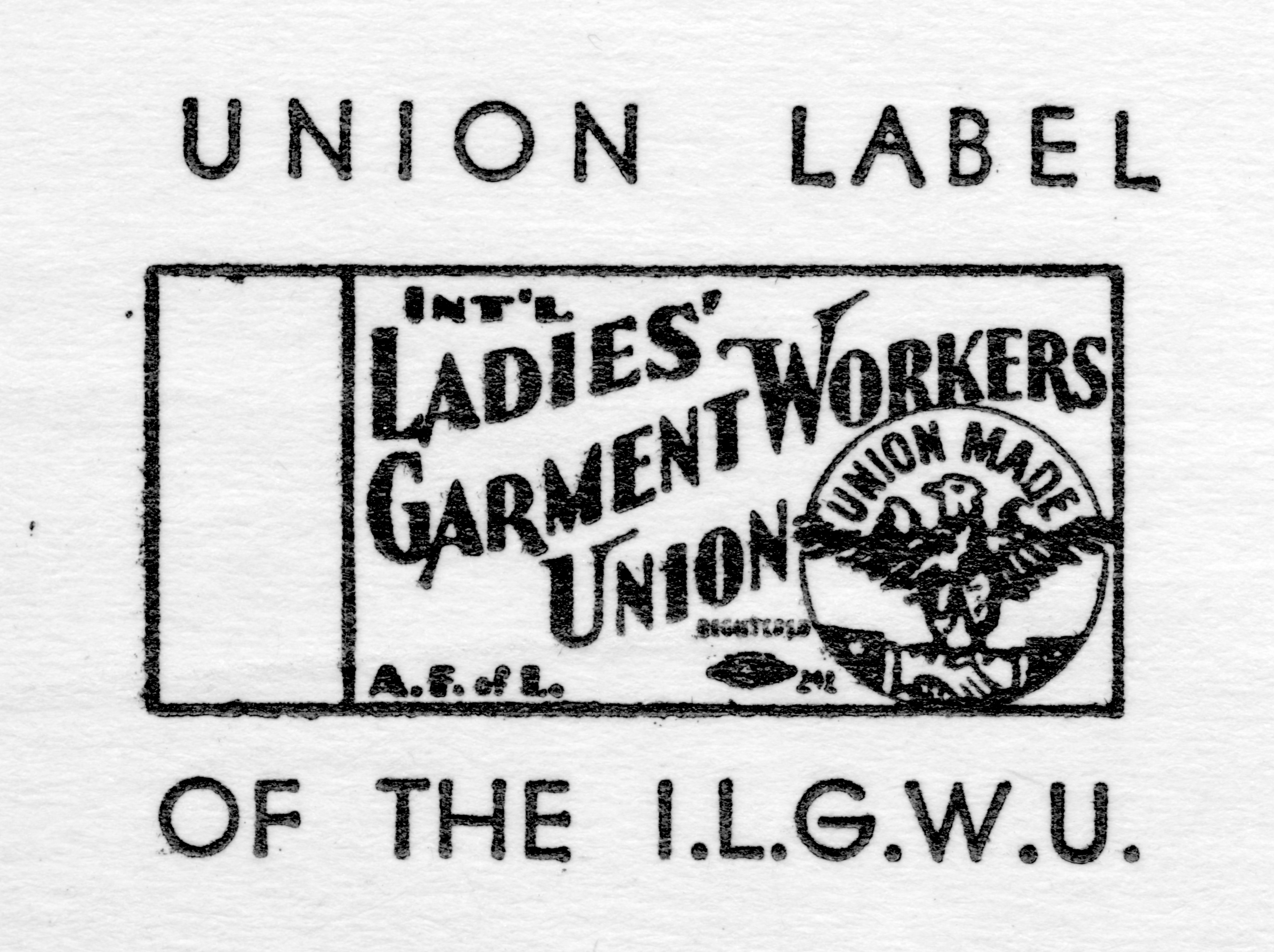
“Look for the Union Label…” When ILGWU founders met on June 3, 1900 and named their union, they immediately adopted a label for it. Early results were encouraging but use remained limited and after 5 years the first label drive ended with only one company in Kalamazoo continuing to use the label. ILGWU called for use of a union label at its first convention. Its use was slow to take hold however, as it was optional and seen as being of limited use. (Cornell University ILR School / Kheel Center ILGWU Collection)
The tradition of women’s involvement in the labor movement continued. In 1900 women in New York organized the International Ladies Garment Workers Union (ILGWU). The industry was hard to unionize because many workers were isolated in tenement sweatshops. But in 1909 workers at the Triangle Shirtwaist Factory in New York City walked out to protest the firing of union members. The walkout ignited frustration across the shirtwaist industry (a shirtwaist was a type of dress). Company brutality against picketers was met by a mass strike of 20,000 workers, mostly young Jewish and Italian immigrant women, in the garment industry. An arbitrated settlement proved a partial victory for the ILGWU, but the three-month strike, known as the “Uprising of the Twenty Thousand,” energized the union movement.
Two years later a fire broke out at that same Triangle factory. At least one of the exit doors was locked, and some of the fire escapes were inaccessible. As a result, many women were trapped. Some burned to death. Others leaped from the ninth floor, in some cases holding hands with a friend or sister as they fell to their deaths. In all, 146 young women died. The 1911 tragedy shocked the country. To many Americans, it laid bare the greed and excesses of industrial capitalism and made clear the need for the reforms unions were calling for.
The most successful union at the turn of the twentieth century was the AFL. Unfortunately for women workers, Samuel Gompers, its first president, shared society’s belief that a woman’s place was in the home. It was the union’s stand that “it is wrong to permit any of the female sex of our country to be forced to work, as we believe that men should be provided with a fair wage in order to keep his female relatives from going to work.” If women engaged in paid work, it was felt, respect for them would diminish and they would “bring forth weak children who are not educated to become strong and good citizens.”
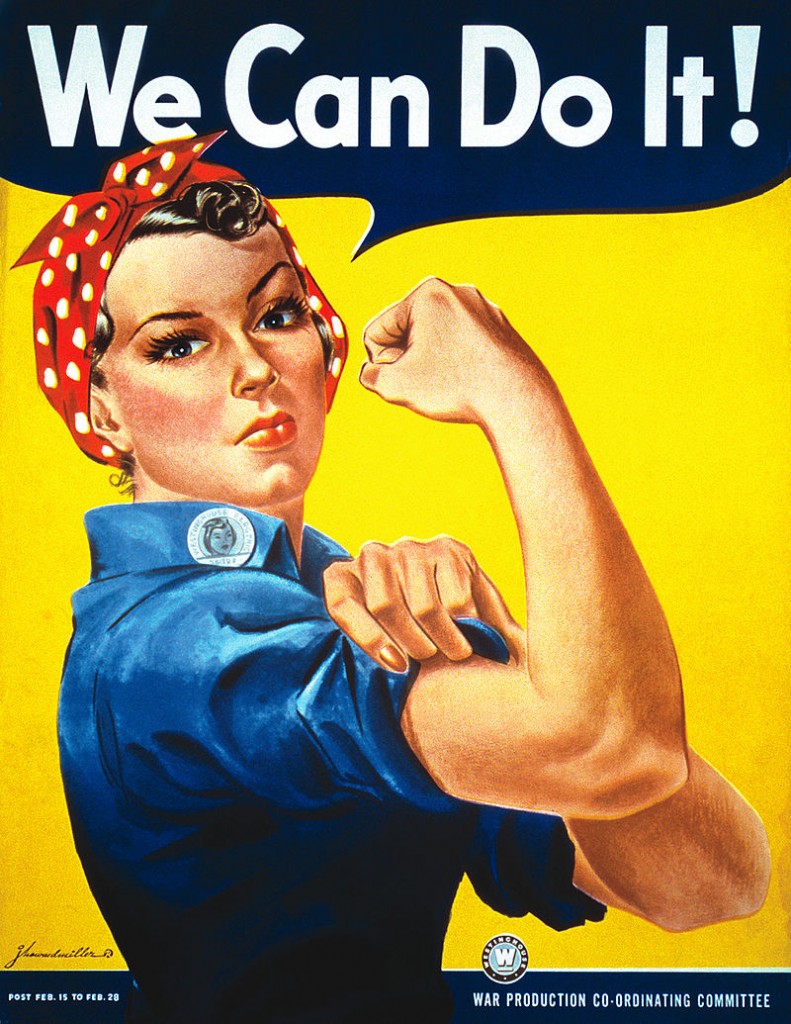
In 1942, Pittsburgh artist J. Howard Miller was hired by the Westinghouse Company’s War Production Coordinating Committee to create a series of posters for the war effort. One of these posters became the famous “We Can Do It!” image—an image that in later years would also be called “Rosie the Riveter,” though it was never given this title during the war. It was only later, in the early 1980s, that the Miller poster was rediscovered and became famous, associated with feminism, and often mistakenly called “Rosie The Riveter.” (Illustrator: J. Howard Miller. Public Domain)
During FDR’s New Deal, which sought to revive the depression-riddled economy through a series of innovative regulations, Congress passed the Wagner Act of 1935, which created the National Labor Relations Board and required private employers to deal with unions and not discriminate against union members. Guaranteeing workers the right to collective bargaining, it also oversaw union elections and the settlement of labor disputes.
As the unemployment rate during the Great Depression exceeded 25 percent of the work force, many Americans came to believe that only men were entitled to jobs. Although many wives sought to help with the family finances by seeking work when their husbands were laid off, some public and private employers refused to hire married women. Because sex segregation in the workplace was so prevalent and unemployment was so much greater in higher-paying heavy industries, these women often had to rely on traditionally female jobs that were scorned by men.
The profile of the female wage earner was changing as the percentage of married women in the work force, increasing since the 1920s, actually rose during the thirties by more than 25 percent. The participation by the United States in World War II accelerated this change. Six million new women workers entered the labor force and took heavy industry jobs formerly available only to men. A popular song, “Rosie the Riveter,” and a Norman Rockwell painting of Rosie that was commissioned for the cover of the Saturday Evening Post in 1943 were invaluable symbols to weapons and munitions manufacturers.
When the war ended, many women had to give up their high-paying jobs to make room for returning veterans. However, even though the entertainment and advertising industries portrayed the American wife and mother as totally devoted to domesticity, increasing numbers of women poured into the work force, taking positions in office work, retail sales, teaching, nursing, and other so-called feminine occupations.
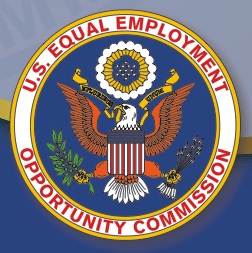
Through its 53 offices nationwide, the United States Equal Employment Opportunity Commission works to stop and remedy sex-based barriers to equal employment opportunity such as hiring discrimination and harassment. In 2014, EEOC staff resolved roughly 26,000 charges of employment discrimination based on sex and recovered $106.5 million for individuals along with substantial changes to employer policies to remedy violations and prevent future discrimination – without litigation.
The passage of the Civil Rights Act of 1964 led to the creation of the Equal Employment Opportunity Commission (EEOC). Sex discrimination cases were low on the EEOC agenda until prodding by groups such as the National Organization for Women brought them to the fore. By 1970, when the courts had invalidated protective legislation, women found themselves eligible for many jobs formerly closed to them.
The world looks brighter now, but no one denies that women still face discrimination or that many female workers are still congregated in sex-segregated jobs. According to the Bureau of Labor Statistics, while only about one-third of all women participated in the paid labor force in 1950, approximately 60 percent did by 2004. Married women increased their participation from 24 to 61 percent in that same period. Major changes took place between 1950 and 1990, with women’s labor force participation leveling off since then. We have even seen a slight decrease in participation rates among white married women with infants in the late 1990s and early 2000s, but that appears to be primarily because of the recession and difficulty in finding work.

Before National Secretaries Week was appropriated by the working women’s movement, florists encouraged employers to give their secretaries flowers. The working women’s movement built upon the feminist insight that acts of chivalry created a smokescreen to mask women’s insubordination, and the slogan “Raises, Not Roses” was born.
In a recent article, “Raises, Not Roses,” published in the Huffington Post, AFSCME President Lee A. Saunders raises the issue that women in the workplace – and even in union workplaces – still do not receive equal pay:
“Their work is worth every dollar a man makes, but their earnings do not reflect that. Women make 79 cents for every dollar a white, non-Hispanic man makes, and the shortfall is even worse for women of color: Black women make 60 cents, and Latinas make 55 cents for every dollar a white, non-Hispanic male makes.
“The disparity is even more damaging, since women are more overrepresented in low-wage jobs, making up two-thirds of low-wage workers.
“This is wrong. Pay equity is the fair thing to do for women. It is also the right thing to do for families. Women comprise half the workforce, so in most families a woman either shares the economic lead or is the sole breadwinner. Every cent counts for working families.”
The history of America’s working women is a history of advocating for the abolition of slavery, the right to vote, the right to unionize, the welfare of children and the extension of human rights to all. Despite the obstacles, despite the stereotypes imposed by society, America’s working women have persevered. Theirs is a revolution still in the making.
Sources & further reading:
“Women in the Workplace: Labor Unions” – Juliet H. Mofford, Women’s History Magazine
“Gender in History of Labor Unions” – Shmoop
“Women and Class: What Has Happened in Forty Years?” – Mark Brenner & Stephanie Luce, Monthly Review
– Originally published in the March 2016 Overture Online.

That’s interesting to know that there were women’s unions as early as 1866. After reading this article, I’d really like to know more about the history of women in the work force. Maybe I can find some good books on the topic.